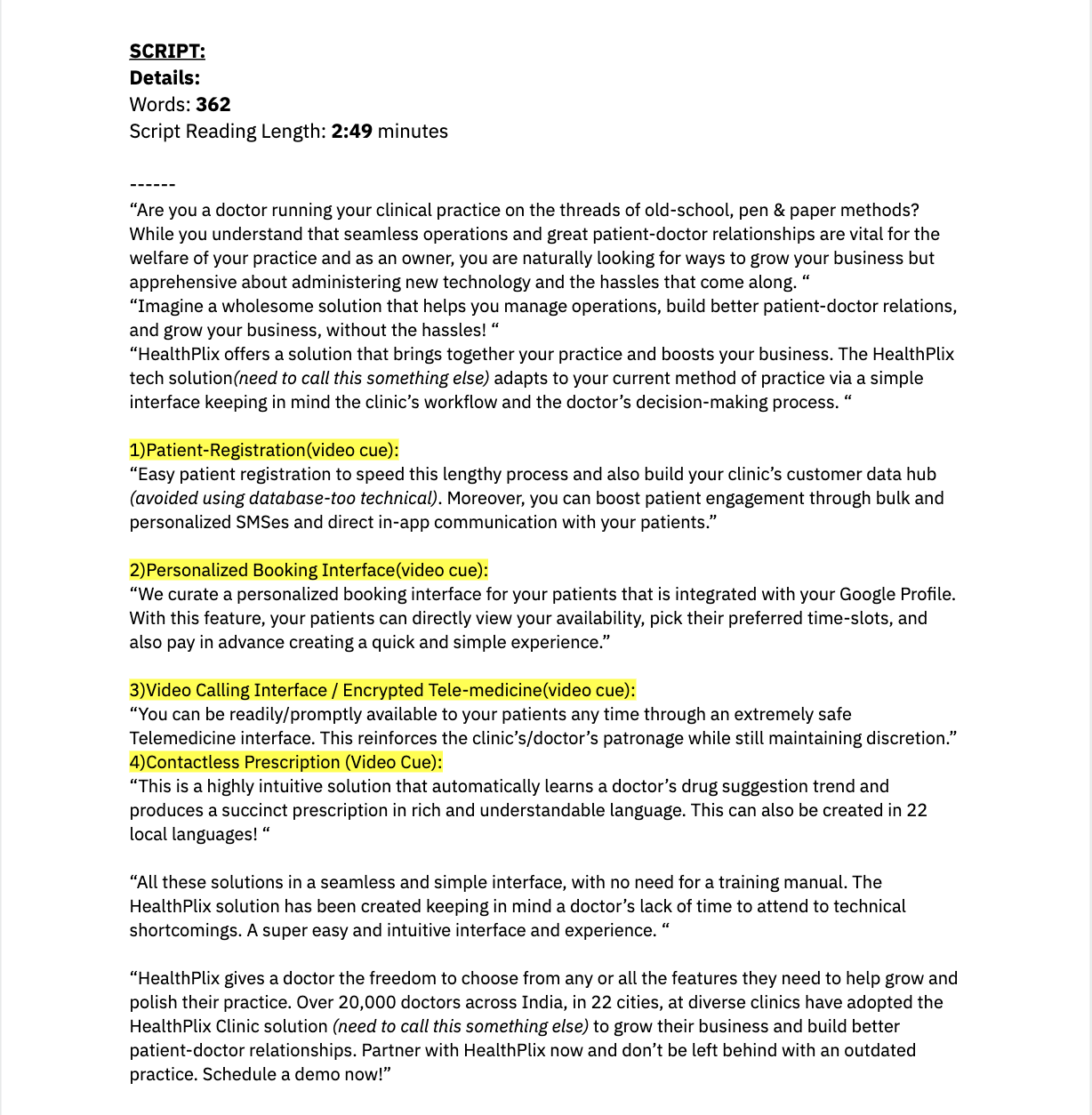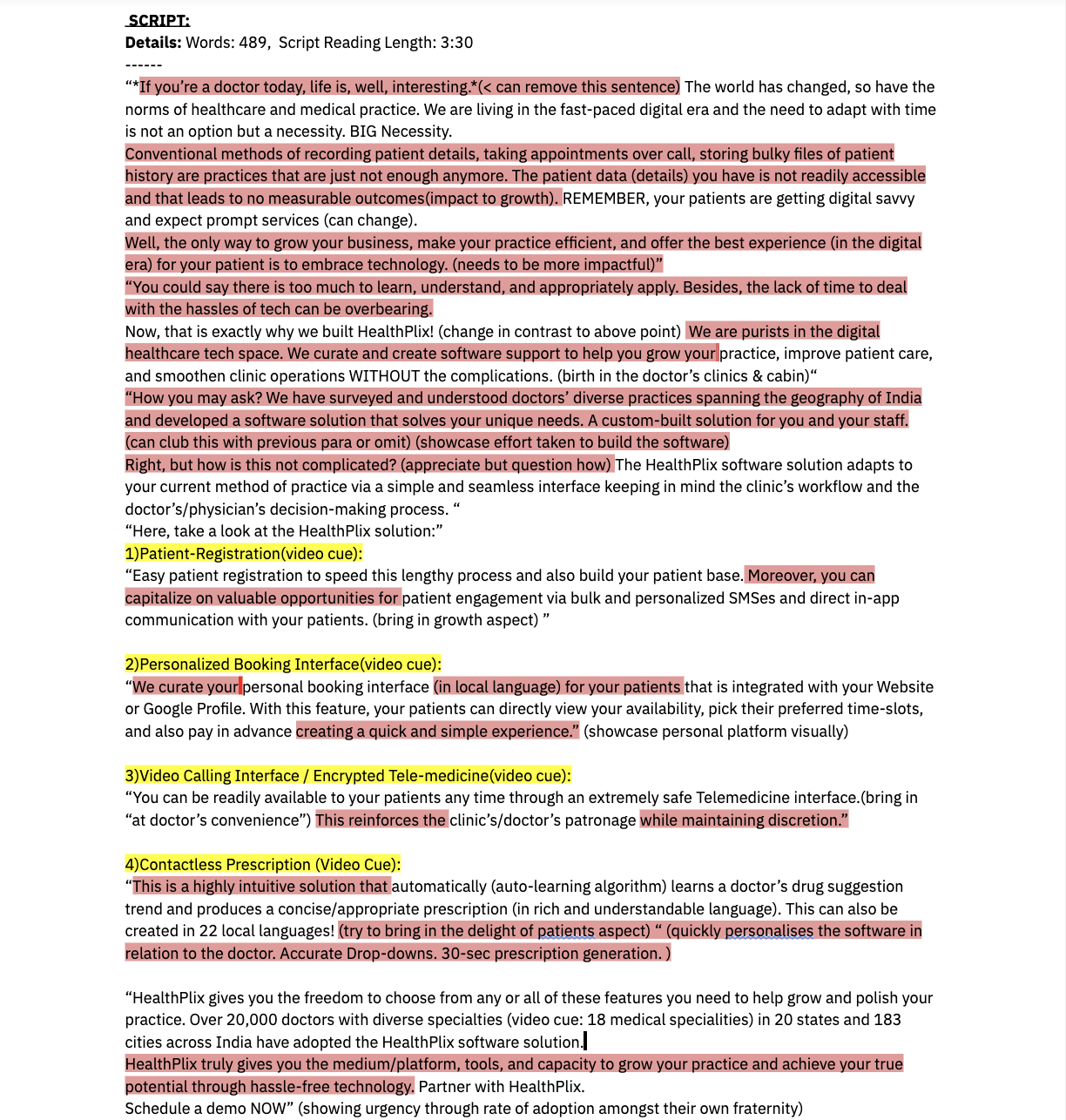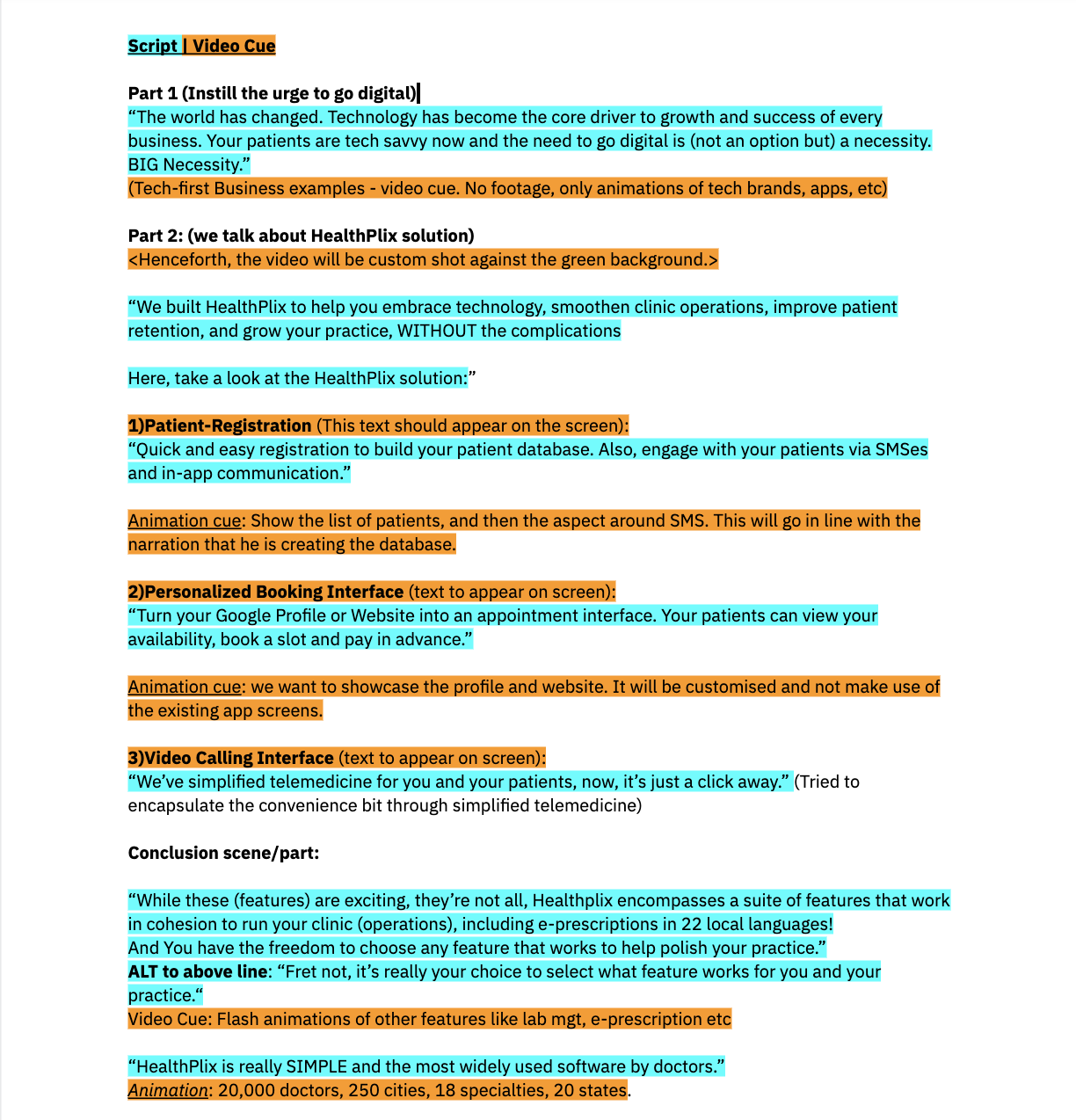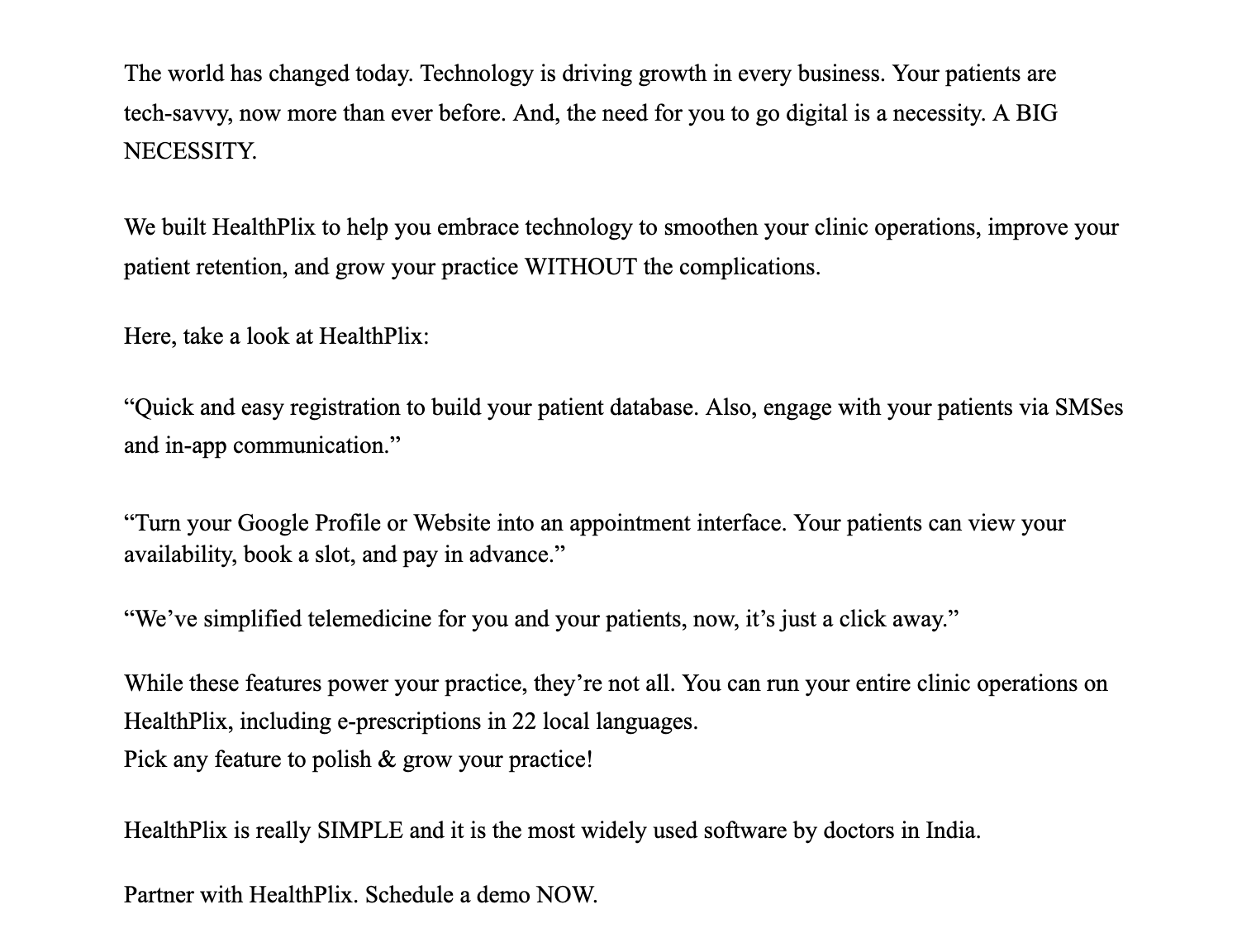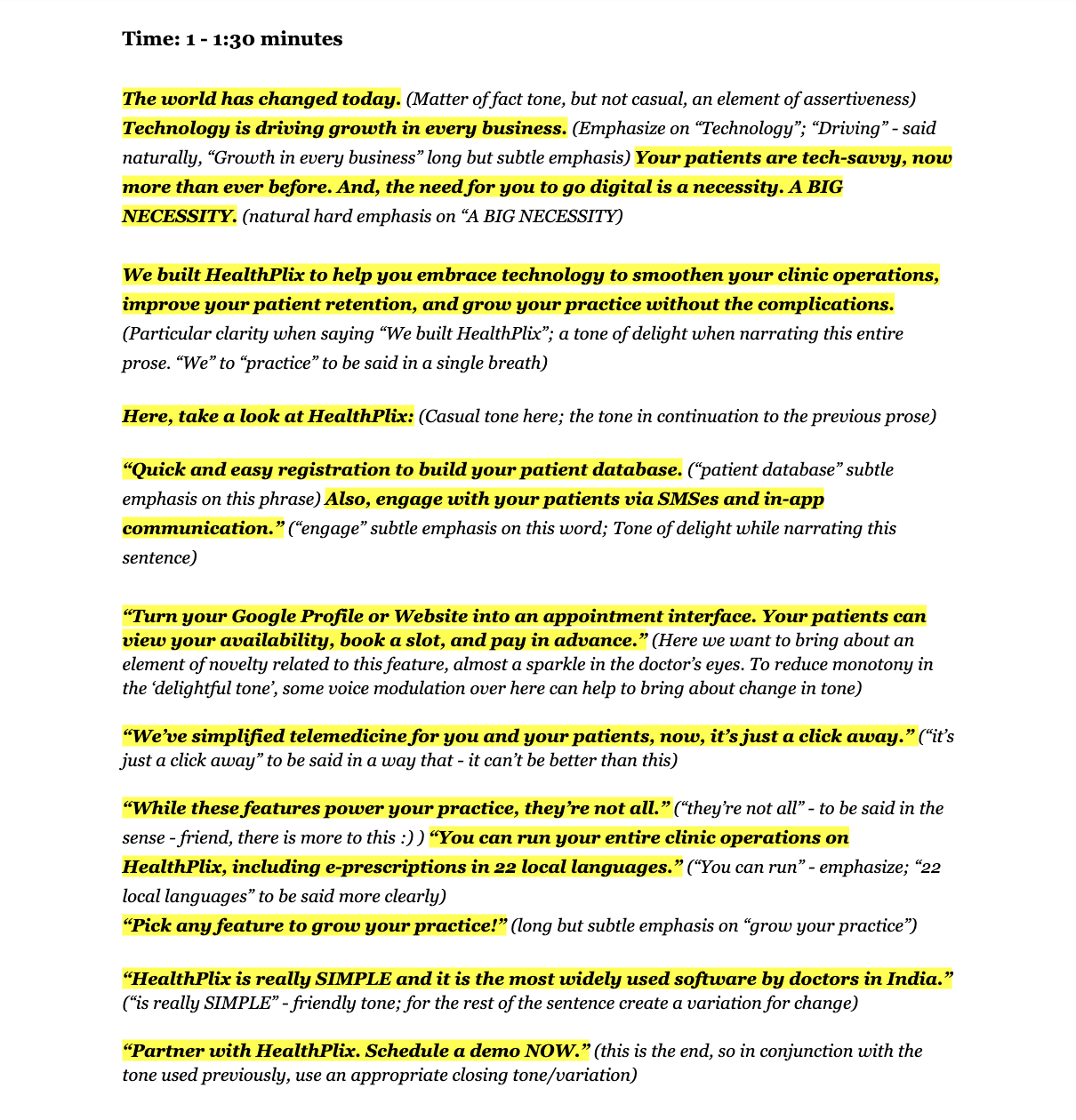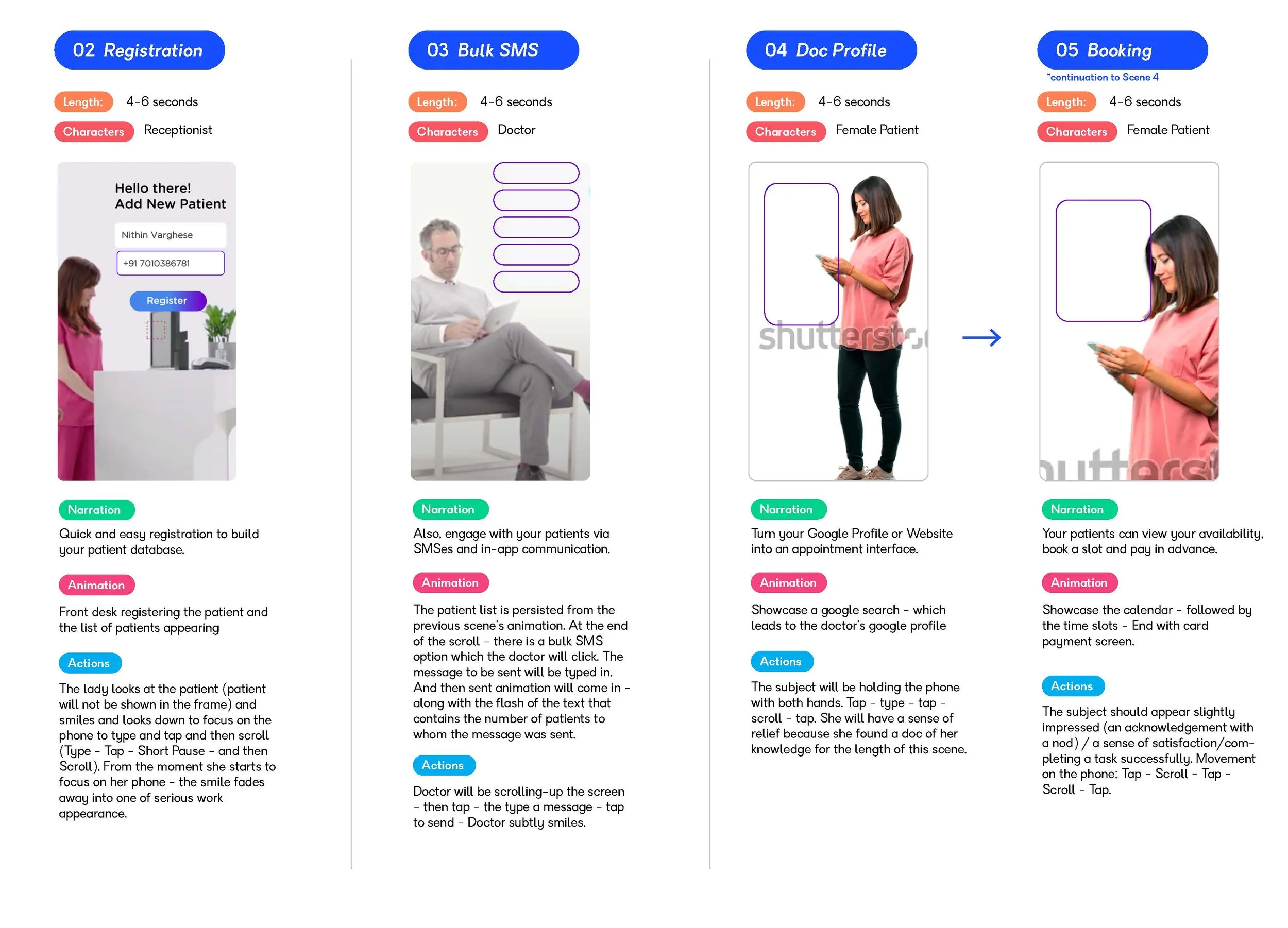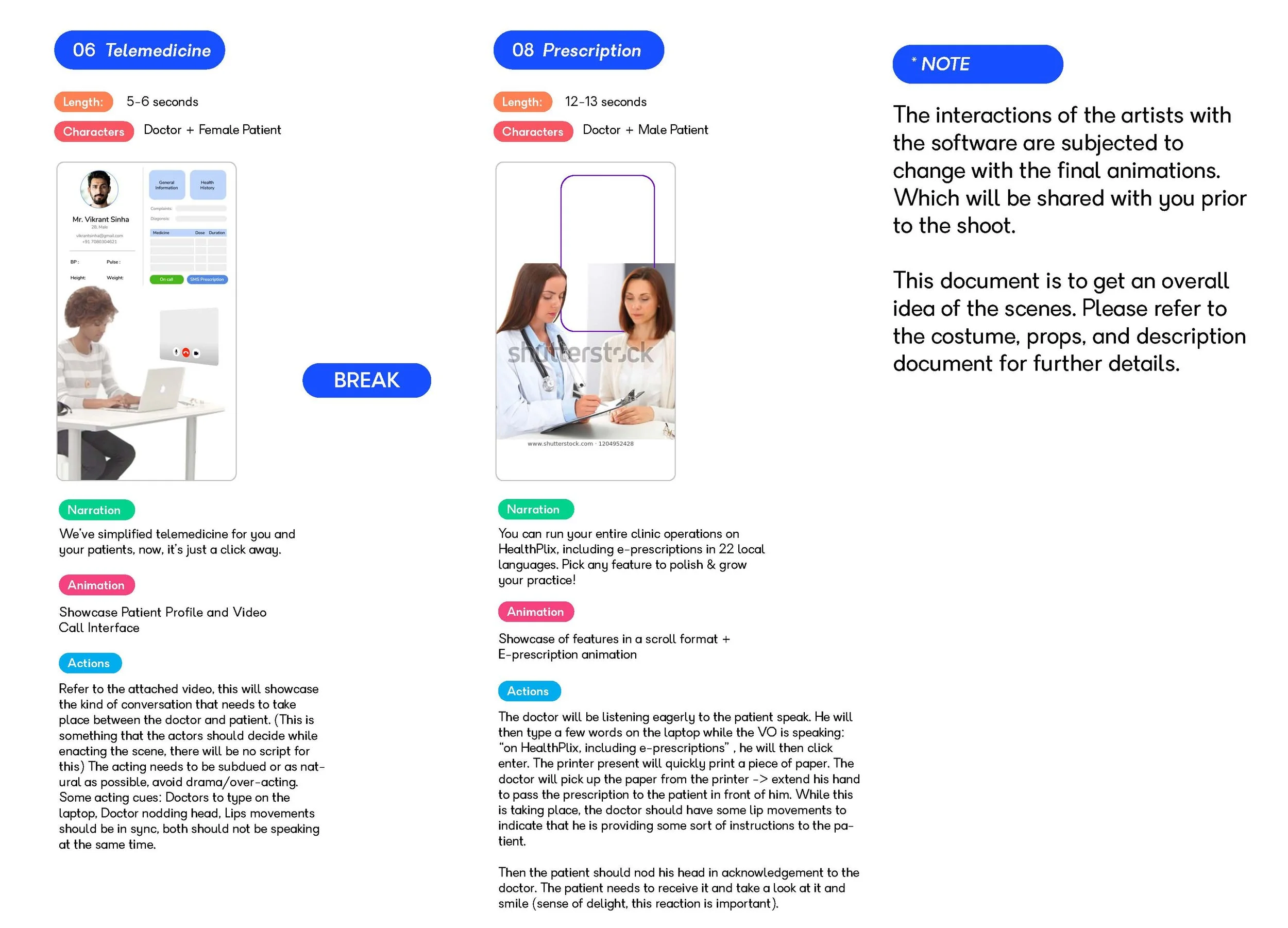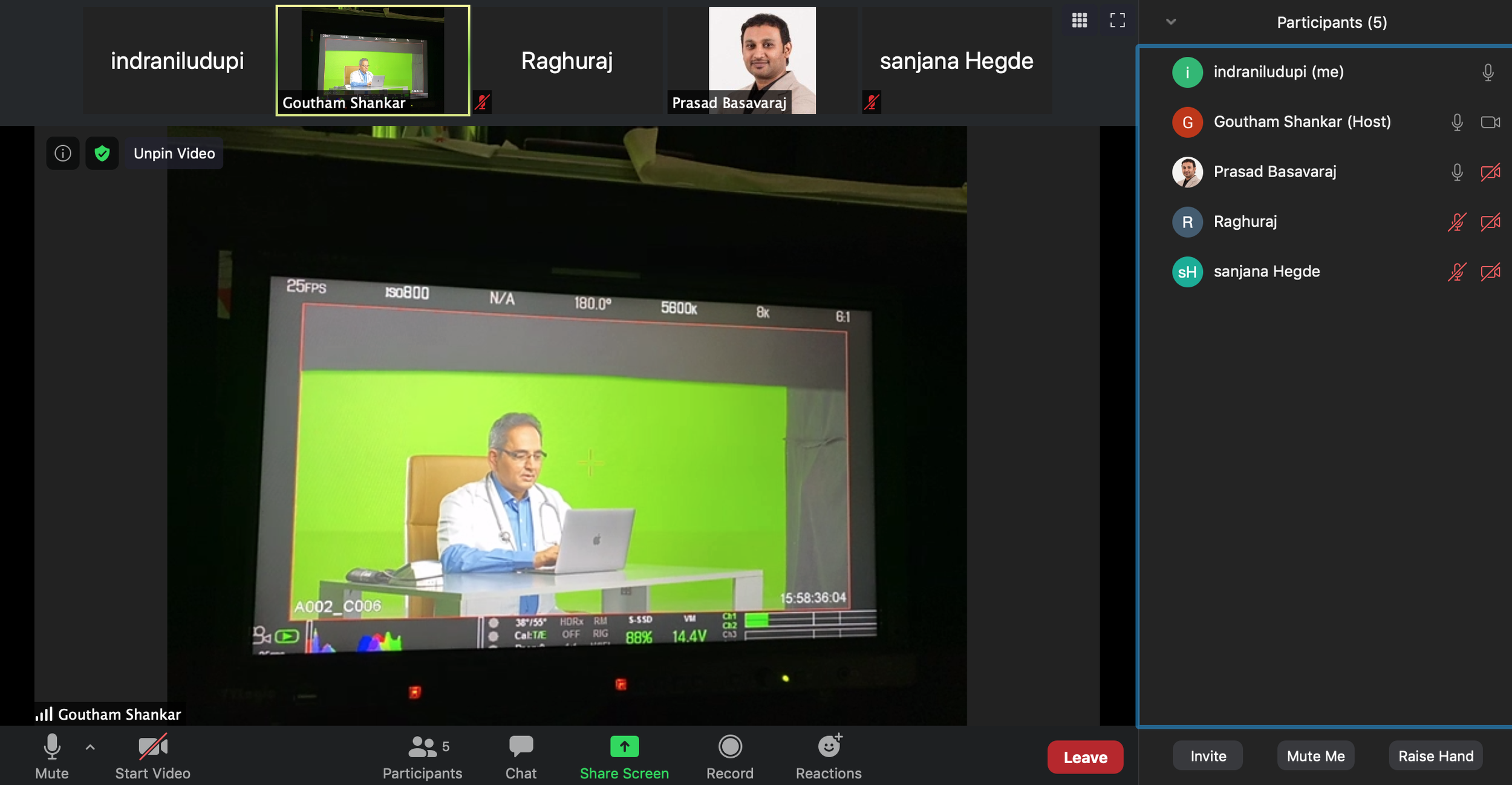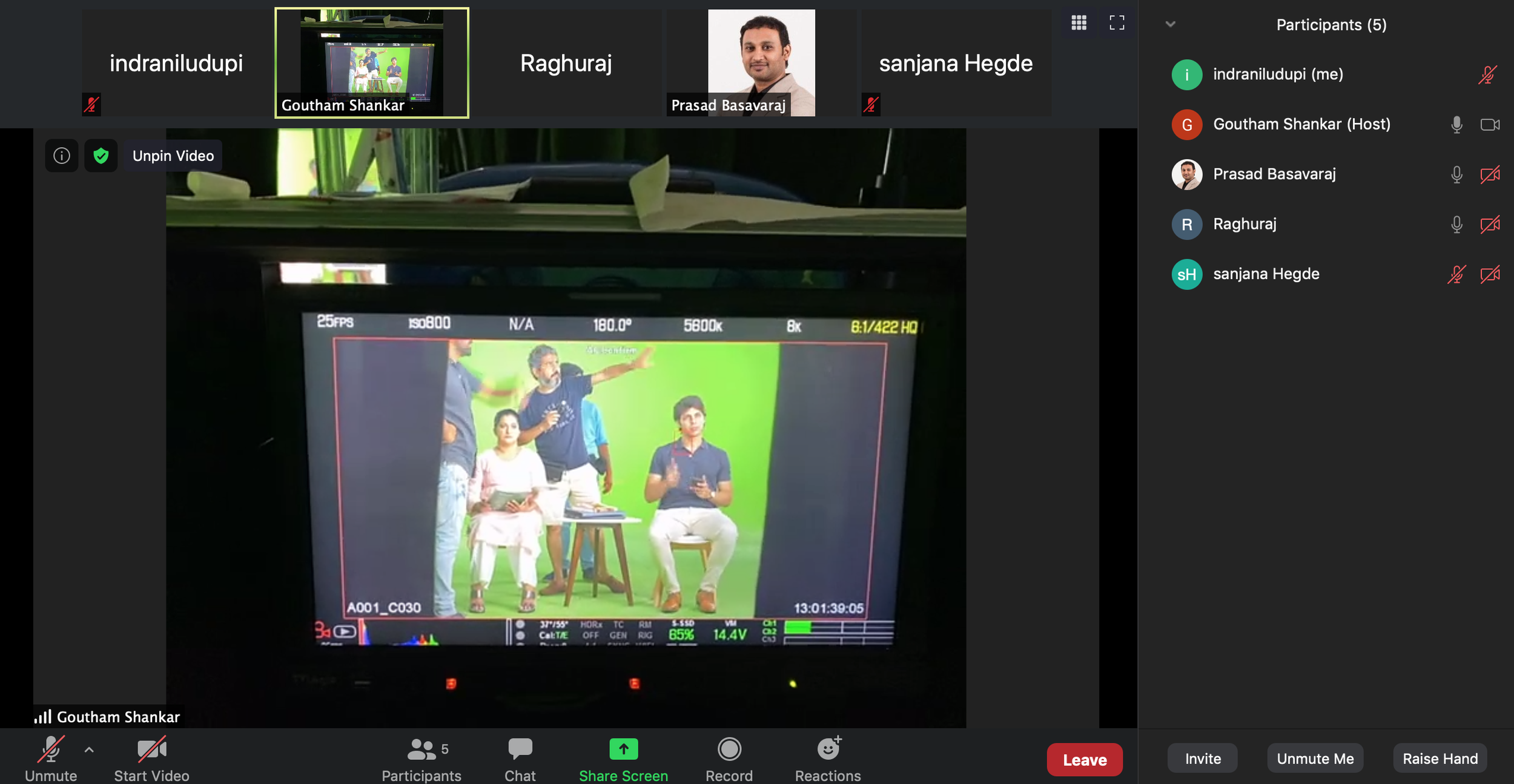Healthplix
Healthplix is a pioneer in the field of digital healthcare technology in India, with a focus on helping doctors grow their business and patient care across clinics and hospitals. They’ve developed a software product that will solve immediate and long-term business needs for clinics/hospitals by providing an end-to-end solution for functions like appointment bookings, payments, registration, database management, patient engagement, remote consulting, and electronic prescriptions.
Deep into the pandemic, with the sales team locked in at home, the go-to-market strategy on hold, and stagnant adoption, the founders were looking for ways to drive the product sales. They came to Opposite HQ with the idea of creating a brand video that could be shared across digital and social platforms to drive sales amongst prospective clients.
I was solely in charge of the project which encompassed - script writing, voice-over audio, creative direction for animations, artist selection, and video direction. The challenge - remote management and execution of all aspects of the project due to the pandemic induced lockdown. Following is an overview of the structured and successful execution of the project:
Industry
Healthcare, Telehealth, Telemedicine
Scope
Brand Video, Video Production
Team
Indranil Udupi, Sanjana Hegde
Script
The script was based on the idea of pushing clinic owners/doctors to adopt technology and digitise their practice, to help them grow their business. As part of the script description, I also had to imagine animation overlays on the video. This gave the clients a clear picture of the script, animations, and final video to be.
The first draft of the script turned out to be extremely lengthy, crossing a reading time of two-minutes. We concluded that the script should not be longer than 60 seconds. After multiple iterations, we arrived at a powerful script that worked both in terms of impact and length. Find below the iterations and final script:
Voice-over Recording
In typical scenarios, I would have had the luxury to visit a recording studio and direct the voice-over artist in person to derive the best outcome. Remotely getting the job done meant clear and detailed instructions in relation to the script. Once the artist had a fair idea of the prose, it was easy for me to further direct him over a Zoom call. Following is the a document that describes the right enunciation and voice modulation:
The detailed instructions mentioned in the brackets, really made the voice-over direction simple for me. We arrived at the final recording within just 5 iterations, almost as good as being present physically at a recording studio.
Animation & Video Storyboard
1) Animations: These were functional elements of the software, to indicate a simple interface and ease of use. With the help of my design team, we crafted animations that brought out the true functionality of the software.
2) Video: The animations would be overlaid on actual clinic scenarios that would be shot in real. Here, I fleshed out a set of scenes that would work with the animations and gave a sense of real-world application and scenarios.
Find below a detailed storyboard that encapsulates the above:
Video Direction
With the help of a team of cinematographers, using a mix of live video over Zoom and on-location imagery, I was able to successfully direct the shoot remotely. Although, it came with its own challenges especially when wanting the scene’s frames to be perfect to avoid heavy editing after. We overcame this by shooting wider frames, so as to have the liberty to crop the frame like we wanted to. Find below some screenshots from the actual call:
Final Video
Note: This is not the absolute final video, some minor edits are still pending at the hands of the clients.
Learnings
This was the first time I worked on a video-production project, managing end to end execution. While the project itself was a great learning experience, what it taught me most was the importance of leveraging and utilizing technology. By using various digital tools, we were able to streamline our production process, increase efficiency, and improve the overall quality of the final product. From utilizing specialized software for editing to using project management tools for tracking progress, technology played a critical role in ensuring our project's success. Boon or bane, technology is the future, and the sooner we come to accepting this fact, the better it is for all.




